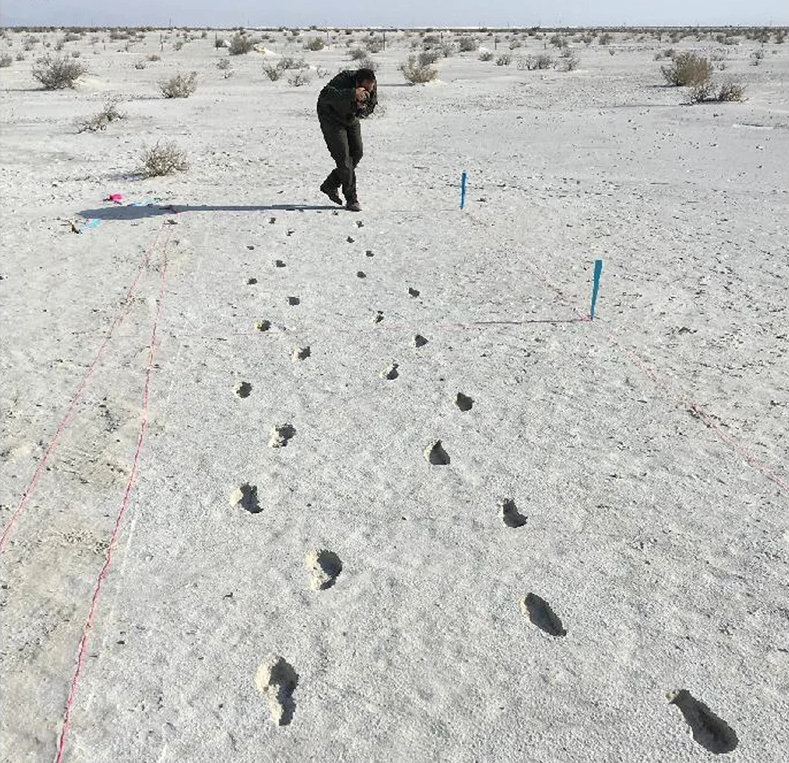Radar reveals ghostly footprints at White Sands

Ground-penetrating radar could help archaeologists spot otherwise invisible ancient footprints, suggests a recent experiment at White Sands National Monument, New Mexico.
Tracks left behind in layers of hardened mud and sand at the site record where humans crossed paths with giant sloths and mammoths during the last Ice Age. But some of the tracks appear only when conditions are just right-usually after a rain-which makes them difficult to study. Archaeologist Thomas Urban of Cornell University and his colleagues used ground-penetrating radar to spot these so-called ghost tracks. The radar images also revealed layers of compressed sediment beneath mammoth tracks, which could reveal information about how the now-extinct woolly giants strode across the Pleistocene world.
Invisible inkTo test the method, Urban and his colleagues pulled a radar antenna across the pale gypsum sands of the former lakeshore, pacing out a grid pattern over a site where, 12,000 years ago, a human and a mammoth crossed paths. Excavations at the site had already revealed "ghost prints" left by a person who walked north, and then back south, for about 800 meters (2,625 feet).
Read 11 remaining paragraphs | Comments